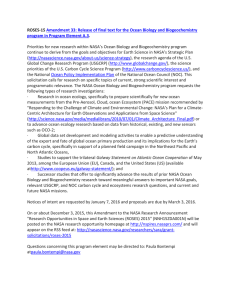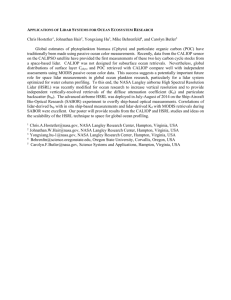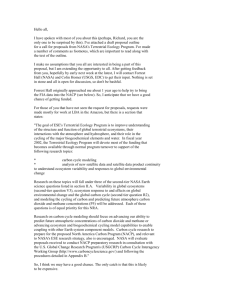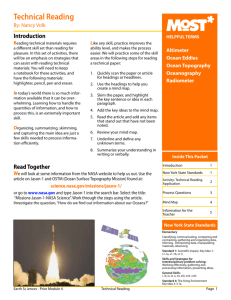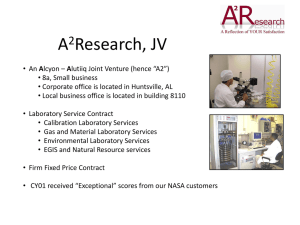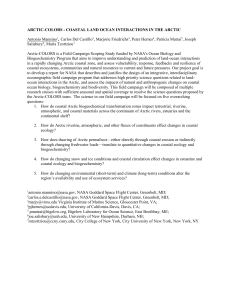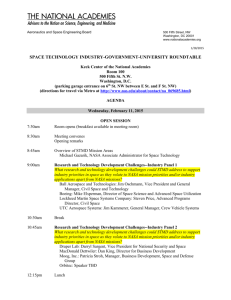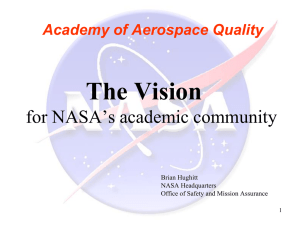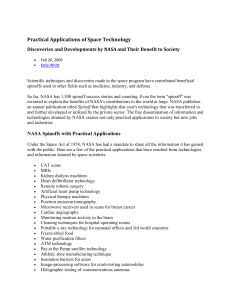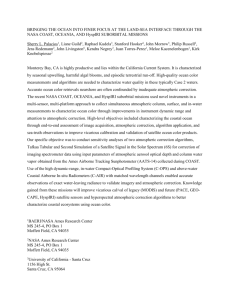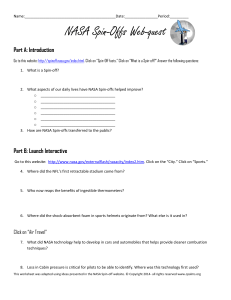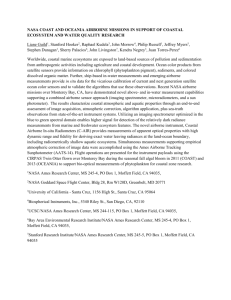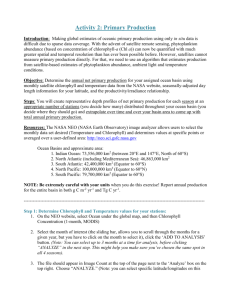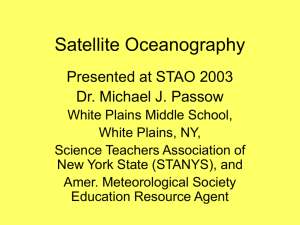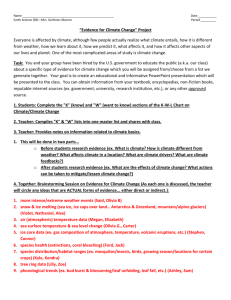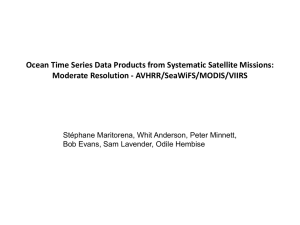Satellite Ocean Colour Observations from NASA`s PACE Mission
advertisement
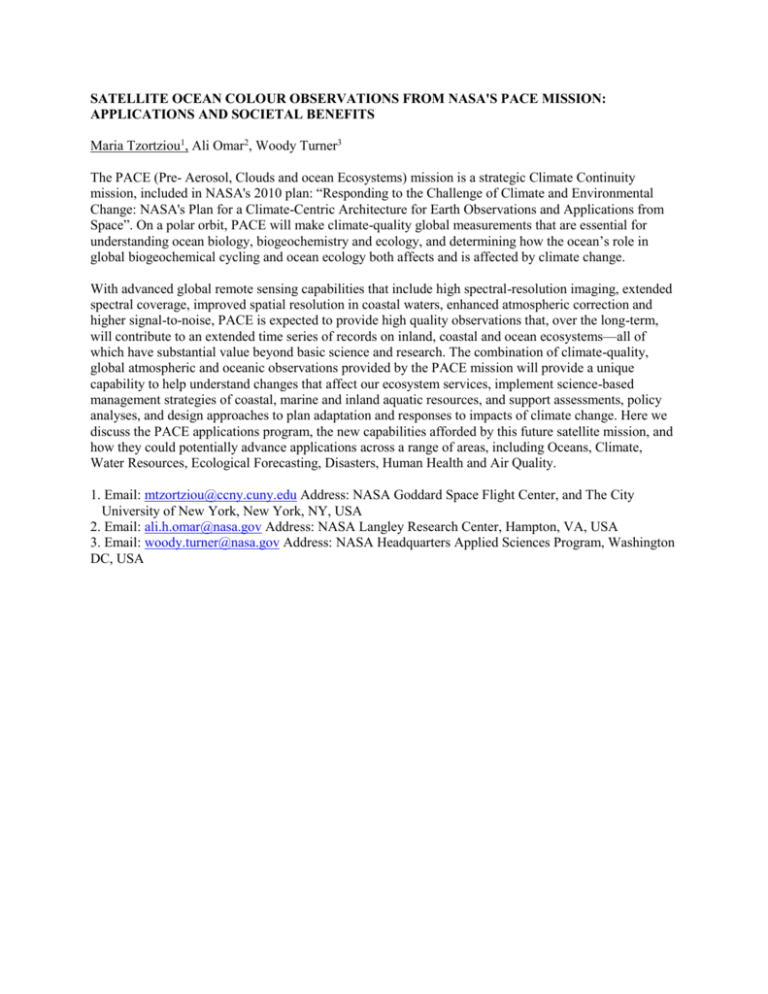
SATELLITE OCEAN COLOUR OBSERVATIONS FROM NASA'S PACE MISSION: APPLICATIONS AND SOCIETAL BENEFITS Maria Tzortziou1, Ali Omar2, Woody Turner3 The PACE (Pre- Aerosol, Clouds and ocean Ecosystems) mission is a strategic Climate Continuity mission, included in NASA's 2010 plan: “Responding to the Challenge of Climate and Environmental Change: NASA's Plan for a Climate-Centric Architecture for Earth Observations and Applications from Space”. On a polar orbit, PACE will make climate-quality global measurements that are essential for understanding ocean biology, biogeochemistry and ecology, and determining how the ocean’s role in global biogeochemical cycling and ocean ecology both affects and is affected by climate change. With advanced global remote sensing capabilities that include high spectral-resolution imaging, extended spectral coverage, improved spatial resolution in coastal waters, enhanced atmospheric correction and higher signal-to-noise, PACE is expected to provide high quality observations that, over the long-term, will contribute to an extended time series of records on inland, coastal and ocean ecosystems—all of which have substantial value beyond basic science and research. The combination of climate-quality, global atmospheric and oceanic observations provided by the PACE mission will provide a unique capability to help understand changes that affect our ecosystem services, implement science-based management strategies of coastal, marine and inland aquatic resources, and support assessments, policy analyses, and design approaches to plan adaptation and responses to impacts of climate change. Here we discuss the PACE applications program, the new capabilities afforded by this future satellite mission, and how they could potentially advance applications across a range of areas, including Oceans, Climate, Water Resources, Ecological Forecasting, Disasters, Human Health and Air Quality. 1. Email: mtzortziou@ccny.cuny.edu Address: NASA Goddard Space Flight Center, and The City University of New York, New York, NY, USA 2. Email: ali.h.omar@nasa.gov Address: NASA Langley Research Center, Hampton, VA, USA 3. Email: woody.turner@nasa.gov Address: NASA Headquarters Applied Sciences Program, Washington DC, USA
